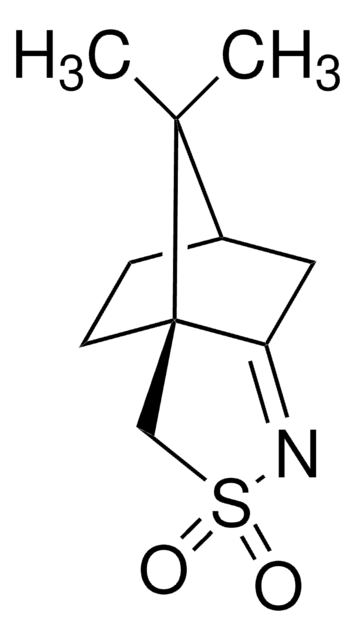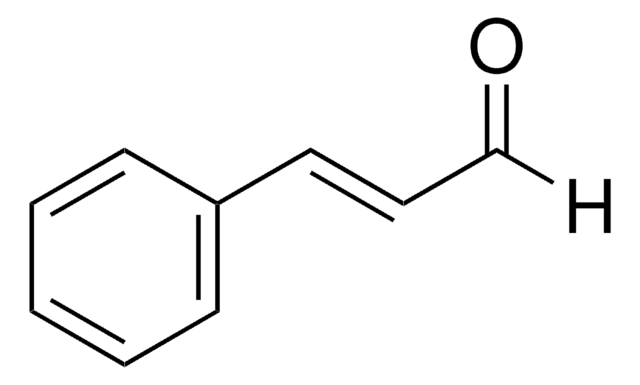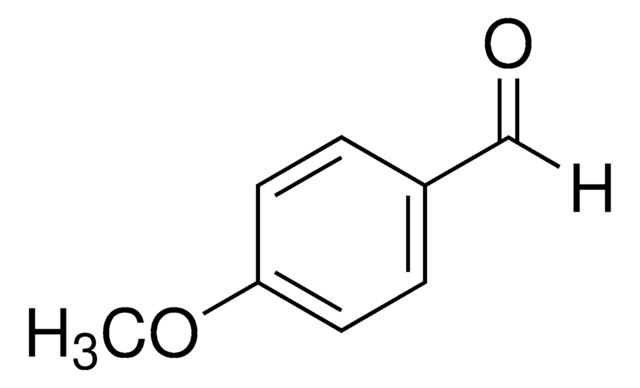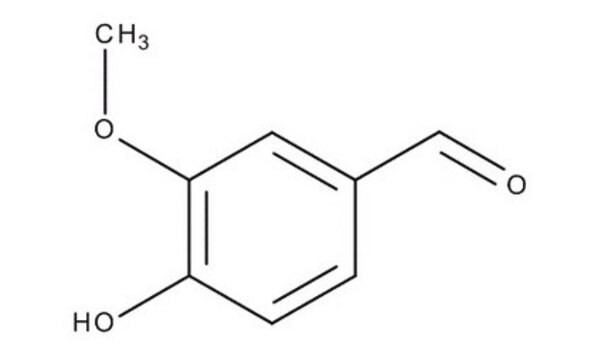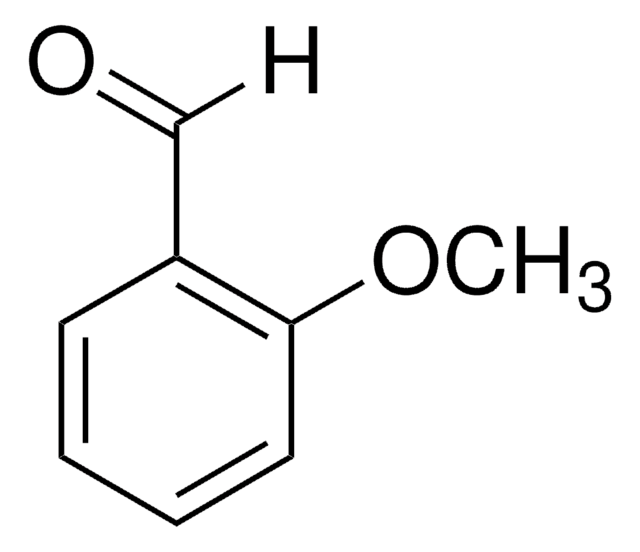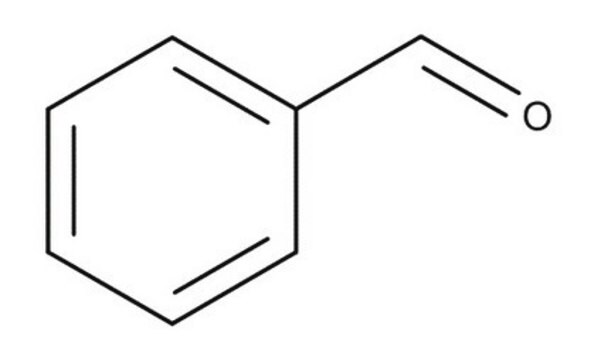V900539
Zimtaldehyd
Vetec™, reagent grade, 93%
Sinonimo/i:
3-Phenylprop-2-enal
About This Item
Prodotti consigliati
Grado
reagent grade
Nome Commerciale
Vetec™
Saggio
93%
Indice di rifrazione
n20/D 1.621 (lit.)
P. eboll.
248 °C (lit.)
Densità
1.05 g/mL at 25 °C (lit.)
Stringa SMILE
O=C\C=C\c1ccccc1
InChI
1S/C9H8O/c10-8-4-7-9-5-2-1-3-6-9/h1-8H/b7-4+
KJPRLNWUNMBNBZ-QPJJXVBHSA-N
Cerchi prodotti simili? Visita Guida al confronto tra prodotti
Note legali
Avvertenze
Warning
Indicazioni di pericolo
Consigli di prudenza
Classi di pericolo
Acute Tox. 4 Dermal - Aquatic Chronic 3 - Eye Irrit. 2 - Skin Irrit. 2 - Skin Sens. 1
Codice della classe di stoccaggio
10 - Combustible liquids
Classe di pericolosità dell'acqua (WGK)
WGK 1
Punto d’infiammabilità (°F)
221.0 °F - Pensky-Martens closed cup
Punto d’infiammabilità (°C)
105 °C - Pensky-Martens closed cup
Certificati d'analisi (COA)
Cerca il Certificati d'analisi (COA) digitando il numero di lotto/batch corrispondente. I numeri di lotto o di batch sono stampati sull'etichetta dei prodotti dopo la parola ‘Lotto’ o ‘Batch’.
Possiedi già questo prodotto?
I documenti relativi ai prodotti acquistati recentemente sono disponibili nell’Archivio dei documenti.
Il team dei nostri ricercatori vanta grande esperienza in tutte le aree della ricerca quali Life Science, scienza dei materiali, sintesi chimica, cromatografia, discipline analitiche, ecc..
Contatta l'Assistenza Tecnica.
